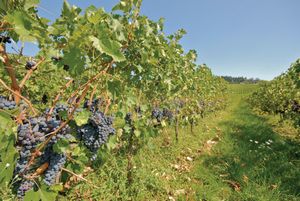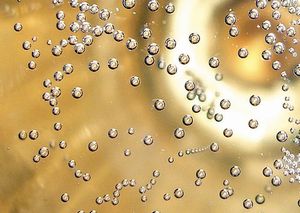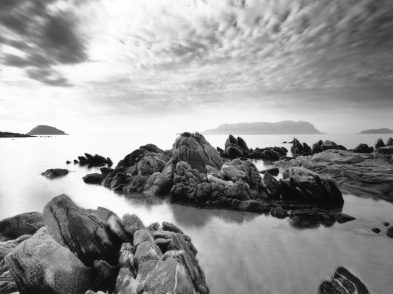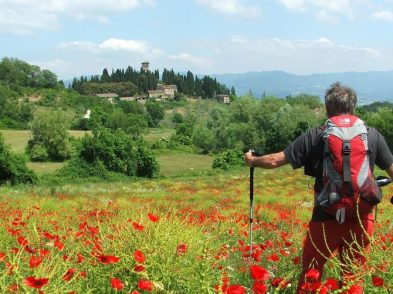Exclusive. Unique. Remarkable. Special: All words most of us adore. For some, these adjectives describe precious gems or fine furs. In Italy, they may refer to the wines of the Valle d’Aosta region. Why? Because some 90 percent of the wine produced in the region never leaves its borders. Even finding them in Tuscany is a search; outside Italy they are a rarity.
Tucked in the northwest corner of Italy and bordered by France and Switzerland, Valle d’Aosta is Italy’s smallest and least populous region. Only around 113,000 people live there. Likewise, it is last in number of hectares dedicated to vineyards (under 1,000) and rates last in the number of wineries that produce ‘registered’ wines (only 66 hectares). Even more amazing is the fact that there are some 3,000 proprietors of wine in the region. Do the math on how small the average farm is—1/3 of a hectare; well under an acre—and you will see why so little is available outside the region. In fact, there are single estates elsewhere in Italy that produce more wine in a year than does the entire Valle d’Aosta region.
The difficulty of growing the grapes is also an issue. More than one source has described the region’s resulting wines as ‘heroic’. Almost all the vines grow on terraces located on the steep mountain slopes. Sources estimate that it takes four times as much labor to cultivate a vineyard here as on one of Italy’s wine-producing plains. The area’s soil is described as rocky, gritty and semi-fertile. Then there’s the altitude: 300 to 1200 meters above sea level. It helps to remember that in this region, grapes grow right at the foot of Mount Blanc. Next, add the surprising fact that the valley is one of the driest areas in Italy. The mountains that surround these vineyards intercept most of the water in the clouds. Further, all or nearly all the grapes have to be harvested by hand; no machinery can handle the slopes and the production is too precious to risk it being lost due to faulty handling.
Despite the difficulties, it is not as though winemaking is a newcomer to the valley. The Romans established Aosta, now the region’s capital, in 25 BC, and named it Augusta Praetoria for Emperor Augustus. After crushing a rebellion by the valley’s inhabitants, Roman soldiers celebrated their victory by looting the locals’ cellars for wines grown on the already-terraced hills. There are references to the wines of the region throughout the middle ages, as they were favored for use in exorcisms.
Following France’s lead, in 1963 Italy began to create a quality assurance label for its wines, dividing them into four classifications. Valle d’Aosta has no DOCG-classified wines and only one DOC. However, this does not mean it does not make good wines. Remember, the DOC (and DOCG) labels refers to standardization of production, not to the wine’s taste.
Valle d’Aosta’s DOC covers more than 20 styles of wine. Some are varietals such as chardonnay and pinot noir. And there are seven geographically designated sub-zones: Arnad-Motjovet, Arvier, Chambave, Donnas, Mergex/La Salle, Nus, and Torrette.
I know from experience that Valle d’Aosta makes good white wines, but I was surprised to learn that nearly two-thirds of its production is red. There are also late harvest wines and rosé wines, if they are to your taste. In fact, there are 22 grape varieties that go into the various Valle d’Aosta wines, some familiar and others decidedly not. The principal grape of the region is the picotendro, which is a local version of nebbiolo. Some of the wines from Donnas and Arnad use this grape to produce DOCs with a resemblance to Barolo wines. Since winemaking has been done for so long in the valley, it would be hard to view pinot grigio, pinot bianco, Muller Thurgau and others as other than native grapes; but, if you want to be a purist, seek out wines made from petite arnine, fumin and blanc de Morgex. Or scout out red wines based on neyret and freisableu grapes. If many of these names appear French rather than Italian, it’s because the region officially recognizes and uses both languages.
The best- known producer in the region is Les Cretes (www.lescretesvins.it), owned by the Charrére family, which has been making wine in the region since the mid-1750s. The internationally respected wine ranking group Gambero Rosso has given its Chardonnay Cuvée Bois its top honor (tre bicchieri / three glasses) for eight years running. It is good value for money, but don’t ignore the other Les Cretes Chardonnay that is aged in steel instead of wood. With many fish dishes, its lack of wood is very appealing; and it’s about half the price.
The Valle d’Aosta finally has two other ‘three glasses’ winners: Anselmet’s Valle d’Aosta Chardonnay Élevé en Fut de Chêne 2005 and the Valle d’Aosta Pinot Gris Lo Triolet 2005 from Lo Triolet. Winemakers Girgio Anselmet (www.maisonanselmet.vievini.it) and Marco Martin (www.lotriolet.vievini.it) are said to have been friends since school days. Gambero Rosso says, ‘they represent the future of the Valle d’Aosta’.
Exclusive. Unique. Remarkable. Special: whether around Florence or on a visit to the Valle d’Aosta itself, these wines are well worth seeking out.








